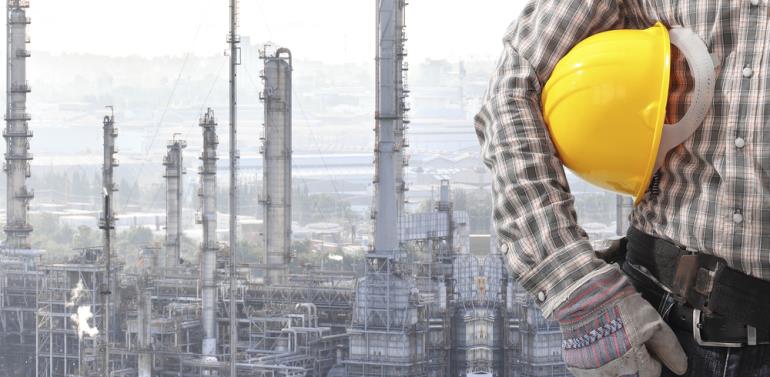International
60 reasons why oil investors should hang on – Oilprice

5. After an upside surprise in 2015 Russian production, there is a building consensus that 2016 results will be off with further declines thereafter. Russian oil giant Lukoil is stacking contractor rigs which will show up fairly soon in the numbers. State backed Rosneft is showing financial strain.
6. Pemex production is down 10 percent.
7. North Sea production, which has increased over the last few years, will slip in 2016.
8. Long-term Canadian oil sands projects will come on in 2016 as will some production in Brazil, but even collectively the amounts are small. It’s probable too that some of the oil miners will put a hold on production due to lower product costs (about $15/bbl less than WTI) and extraordinarily high lifting and processing costs (some of the sands are subjected to subsurface CO2 drives, others are surface mined).
9. Anticipated Iranian exports are here, but the projections are all over the place from the Iranian government’s claim of 1 million b/day in 6 to 12 months to Rystad Energy’s claim of 150,000 b/day. Even the middle ground argument of 500,000 b/day assumes Iran can get back to their long-term trend line, which had been declining during the 5 years prior to 2011 sanctions. Fields are in poor repair and the gas drives essential to production have been mostly abandoned. All in, it’s most likely that production will stutter step up to the trend line due to delays caused by political process and infrastructure funding. This, like all things, will take longer than expected but watch out for early sales. You will be seeing more inventory than production as Iran unloads the 30 to 45 million barrels of oil in storage. Allow some time to work off stocks to get an idea of the actual production numbers, which will likely disappoint.
10. Depending on the source, $140 to $200 billion of expenditures has come off of long term projects in 2015 with calls for another $40 to $150 billion in cancellations and postponements in 2016. This won’t be made up by renewables. The current and projected crude and natural gas prices have dis-incentivized consumers from wind and solar. Governments after the Paris accord may throw money around but consumers will likely not follow until commodity prices make them.
11. All said, these capex cuts will result in a loss of at least 5 mb/d in long-horizon production. These are the goliath type projects that we absolutely need to match to current plus anticipated consumption increases.
12. Existing wells have natural decline curves. Some hold up better than others but all said the global yearly decline rate without additional drilling is right around 4 mb/d.
13. Hedged bets started coming off in late 2015 and will continue in early 2016. Accompanying this could be the capitulation in activity and production that the market has been looking for.
14. Global capex declines have occurred here and there over the past 20 years but always rebound the following year. For the first time in recent history, the global oil complex has charted two consecutive years of declining budgets. 2014 showed a small constriction but 2015’s 20 percent capex decline is unprecedented in terms of size and is the highest by percentage in 20 years. And right now, 2016 doesn’t look like it’s going to have much bounce to it.
15. The world seems to be moving closer to a supply side disruption. Middle East wars, skirmishes and terrorist attacks are increasing in size and frequency. Libyan oilfields are a constant target. Nigerian installations are vulnerable. ISIS controls most of Syria’s small oilfields. Yeminis missiles are targeting Saudi oil installations and would have hit their targets in December launches had the Saudi’s not shot most of them down. Iraqi production is somewhat safe, but only somewhat. Venezuela’s PDVSA is teetering in its ability to pay for the imported diluents needed to export its crude. Tankers are stacking up in the Jose Petroterminal demanding payment up front before unloading up to 3 million b/month of naphtha. And then there’s the torched embassies, mass beheadings, a resurgent Shiite state and a hardening Sunni stance amid a claw back of freebies to Saudi Arabia’s citizens. It’s not good. Not at all. Our best hope is that price rebalancing will occur quickly through supply and demand metrics rather than bloody supply-side shocks.
-

 Alamaliktistaad Magazines2 months ago
Alamaliktistaad Magazines2 months agoAlam Al Iktisaad – September 2025 Edition
-

 News2 months ago
News2 months agoKitchenomiKs Secures Investment of US$3.2M Led by Jasoor Ventures
-

 Banking & Finance2 months ago
Banking & Finance2 months agoOman Arab Bank Highlights Its Ongoing Strategic Initiatives and Future Plans
-

 News2 months ago
News2 months agoIEA Expects Global Oil Market to Remain Oversupplied in 2026
-

 Energy2 months ago
Energy2 months agoWLGA Middle East LPG Summit & Expo 2025 to be held at OCEC on November 10 and 11
-

 Real Estate2 months ago
Real Estate2 months agoAl Mouj Muscat Unveils Azura Beach Residences Phase 2: A New Chapter in Waterfront Living
-

 Leaders Speak1 month ago
Leaders Speak1 month agoDhofar International Development and Investment Company: Driving Sustainable Growth and Strategic Synergies in Oman’s Investment Landscape
-

 Events1 month ago
Events1 month agoOER Corporate Excellence Awards 2025 Honours Entities and Innovations in Oman































You must be logged in to post a comment Login